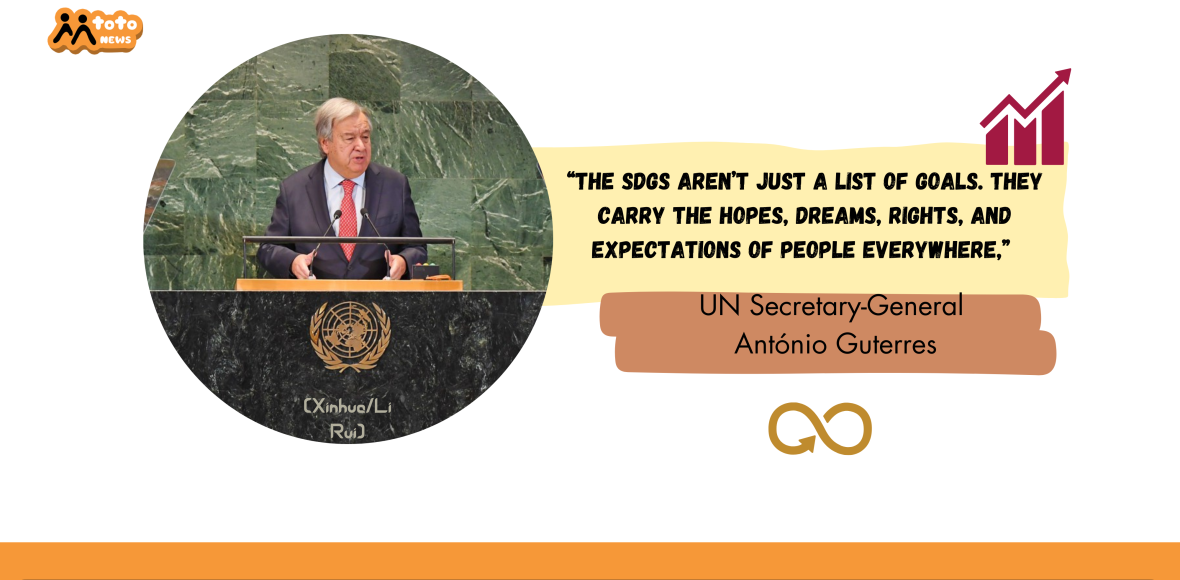
In response to the escalating global crises, world leaders came together at the SDG Summit on September 18 and 19 at the UN headquarters in New York and made a historic commitment to step up their efforts to achieve the Sustainable Development Goals (SDGs) by 2030. The Sustainable Development Goals (SDGs), which were formed in 2015 as a worldwide roadmap, sought to ensure the wellbeing of all people on a healthy planet, but recent years have seen threats to their advancement.
Since 2020, nearly 110 million people have been forcibly displaced, and tens of millions have plunged into poverty. As a result of the worsening of inequalities, particularly those affecting women and girls, many governments are forced to choose between paying down debt and funding vital programs like healthcare and education.
The climate emergency continues to wreak havoc, with developing countries and vulnerable populations bearing the brunt of these challenges.
The SDGs, according to UN Secretary-General António Guterres, are more than just a list of objectives. “The SDGs aren’t just a list of goals. They carry the hopes, dreams, rights, and expectations of people everywhere,” said UN Secretary-General António Guterres. “Yet today, only 15 percent of the targets are on track. Many are going in reverse. Instead of leaving no one behind, we risk leaving the SDGs behind,” he said.
At the summit, leaders reaffirmed their commitment to building a sustainable, inclusive, and affluent world by 2030 by adopting an action-oriented political declaration. The proclamation emphasizes the urgent need for more investments in developing countries’ energy, food, digital transformations, and educational systems. Additionally, it advocates for a $500 billion yearly SDG stimulus and changes to the international financial system to properly reflect the state of the world economy.
By 2027, more than 100 nations will have committed to taking national initiatives for SDG transformation that set investment, poverty reduction, and inequality reduction as top priorities. Developed nations and those with the means are expected to meet their obligations for official development assistance (ODA), stop making debt payments, and look into creative financing options.
The SDG Action Weekend brought together over 3,000 people from different fields. On SDG Acceleration Day, they highlighted six key areas: helping people, clean energy, better education, improved food, using technology, and taking care of nature.
The Summit, with statements from the President of the General Assembly, the UN Secretary-General, and the President of the Economic and Social Council, will continue for two days, including Leaders’ Dialogues to report on progress and set concrete national commitments.
The SDG Media Zone, taking place from September 18th to 22nd, will feature influential figures, activists, experts, and media partners discussing actions and solutions in support of the SDGs. It aims to bring the 2030 Agenda into public discourse through in-depth interviews and discussions, all livestreamed on UN WebTV.
The SDG Pavilion, running from September 15th to 22nd, serves as a symbol of the midway point in achieving the Goals. Organized by the UN Office for Partnerships in collaboration with Project Everyone, it will host Halftime Talks and a gathering of women leaders to mobilize efforts to fulfill the promise of the SDGs. These sessions will also be livestreamed on UN WebTV, emphasizing the global commitment to making progress in the second half of the SDG journey.

Leave a Reply